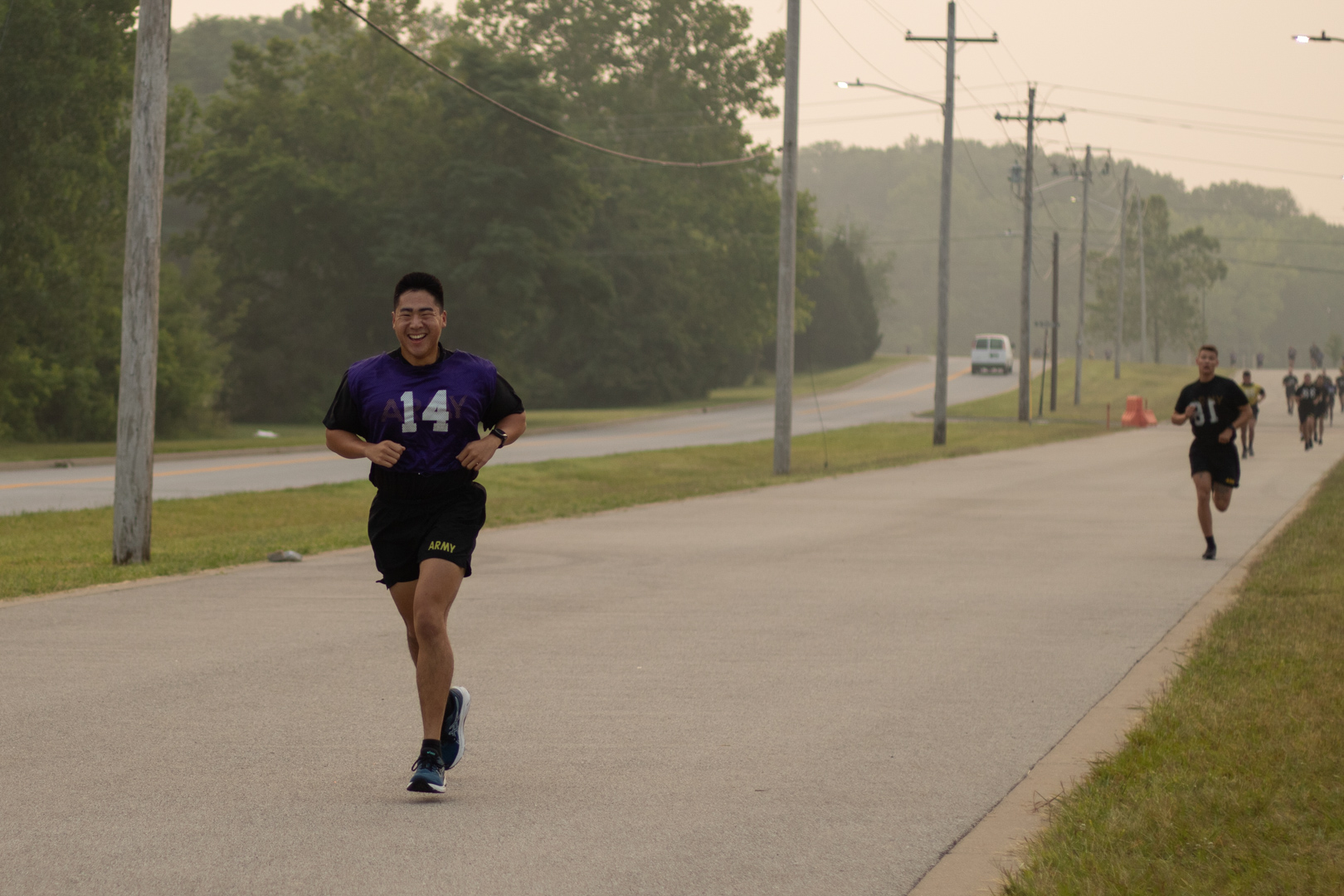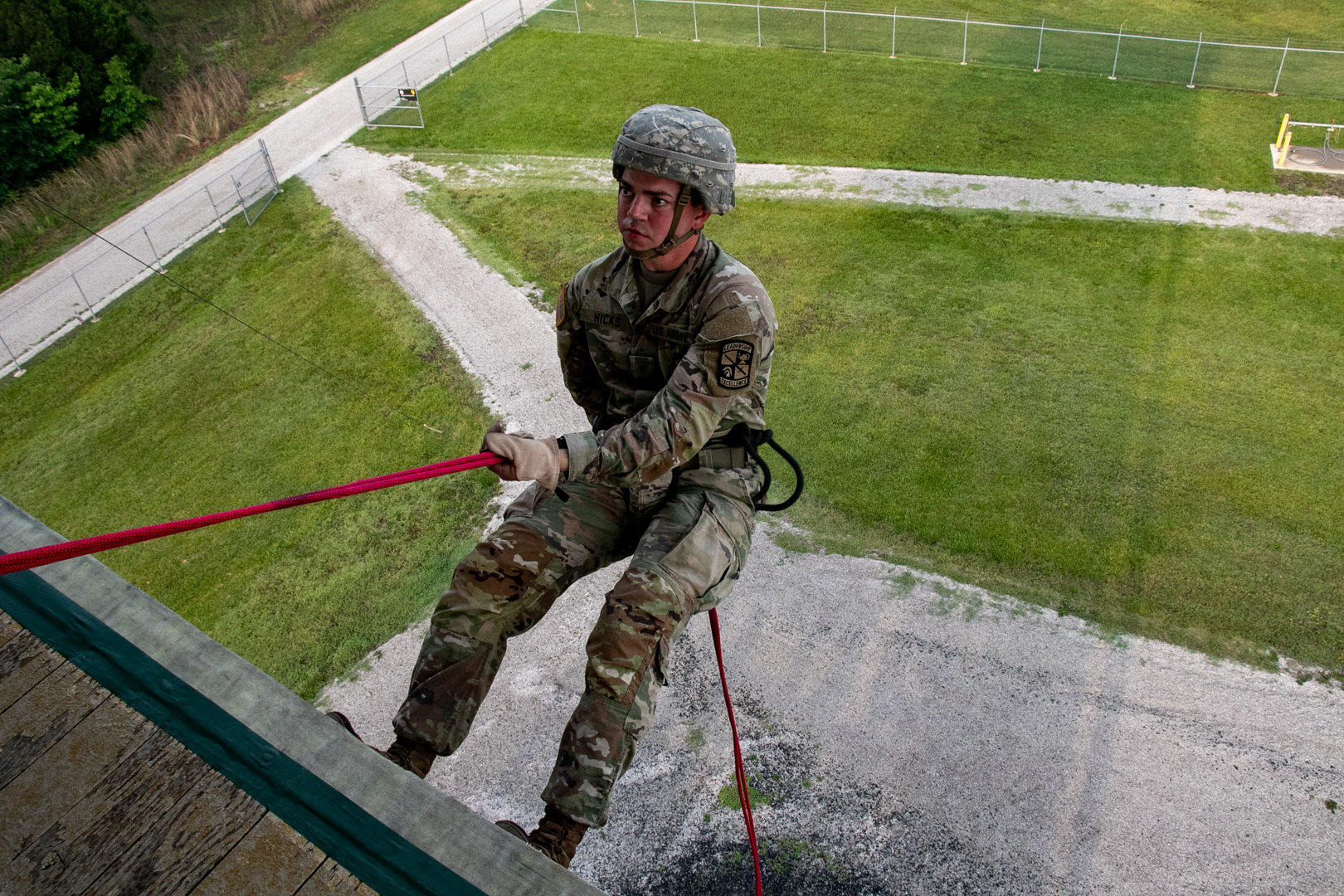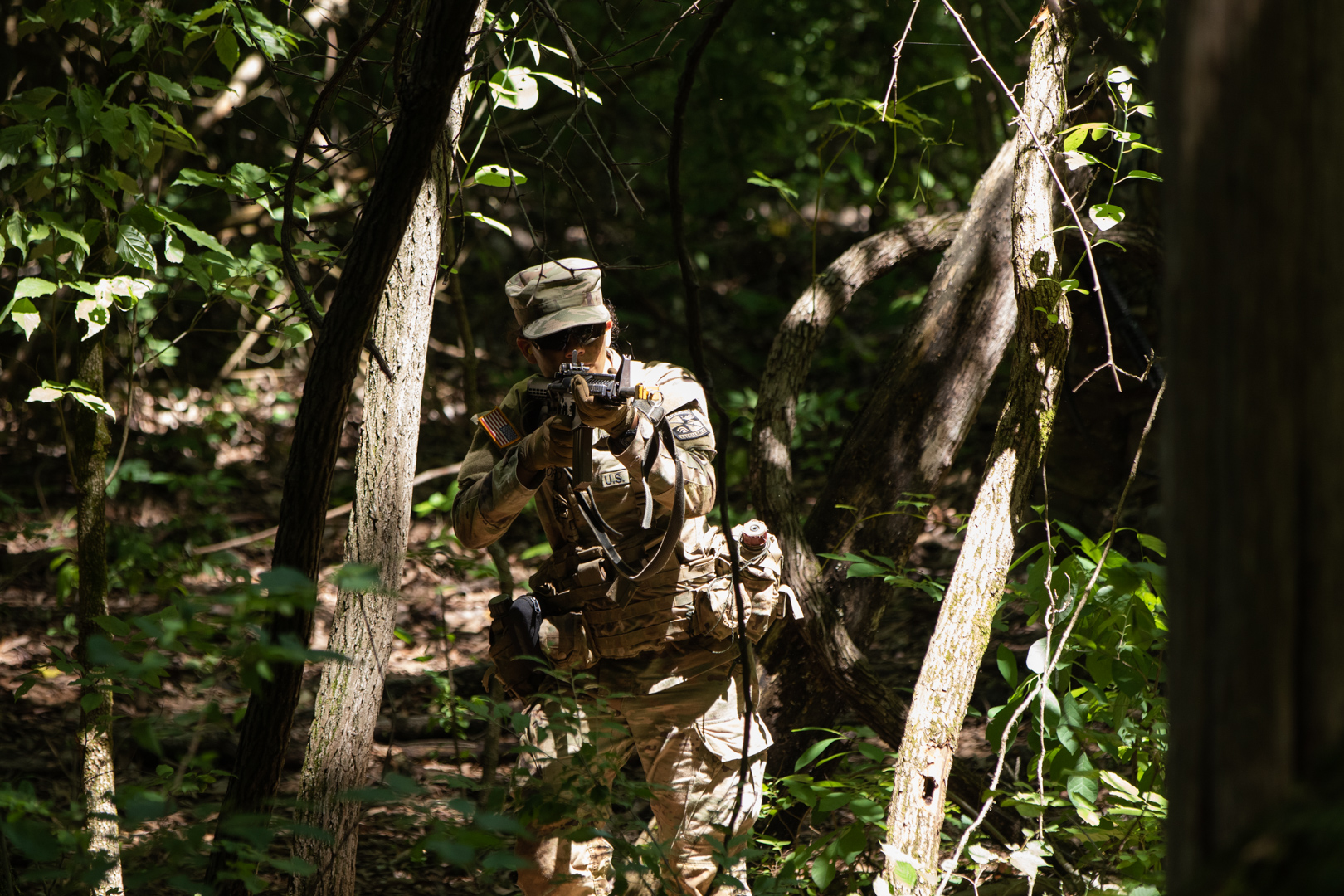FORT KNOX, Ky. – 8th Regiment Advanced Camp Cadets were briefed on hazardous Chemical, Biological, Radiological and Nuclear (CBRN) weapons before entering what is called the confidence chamber, 1 July.
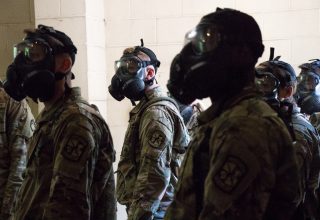
8th Regiment Advanced Camp Cadets wait for instruction to take off their masks. Fort Knox, Ky. July 1, 2019. | Photo by Mary Kate Griffin, CST Public Affairs Office.
Inside the chamber, Cadets are exposed to the simulated effects of CBRN weapons with a concentrated tear gas that irritates skin, eyes and the respiratory system.
Cadets enter the chamber with masks dawned and sealed. After a series of tests to check that their equipment is properly functioning, Cadets are instructed to break the seal on their masks and expose themselves to the gas. The objective of this training is to establish trust with their equipment.
“In the scare of the moment, if you are unsure that your equipment works, you panic,” said Sgt. Kortney Burdine, an instructor during the training. “Everyone feels nervous going into the confidence chamber. Understand that everyone else feels the same way.”
Cadet Ryan Sanfilippo, attending Hampden Sydney College, felt prepared for his second chamber experience.
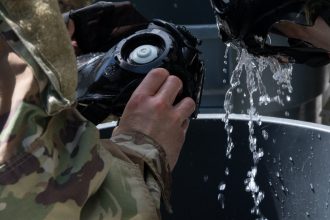
After exiting the confidence chamber, 8th Regiment Advanced Camp Cadets wash their masks. Fort Knox, Ky. July 1, 2019. | Photo by Mary Kate Griffin, CST Public Affairs Office.
“I knew what to expect. I did better than last time,” said the Richmond, Virginia native. “I trust my equipment completely. I did the test and everything, no broken seals, everything works. You can wear the mask for up to 15 hours-not that it would be comfortable-and I believe that.”
Cadet William Smith, attending the University of New Hampshire, had been through the confidence chamber six times as an enlisted soldier before his CBRN training with 8th Regiment.
“It’s always better when you are leading and you know exactly what’s happening,” said Smith. “This training will help me lead from the front.”
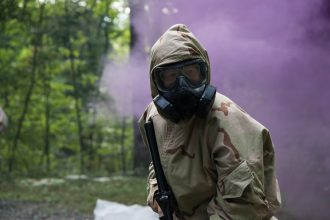
8th Regiment Advanced Camp Cadets watch a demonstration of CBRN defense. Fort Knox, Ky. July 1, 2019. | Photo by Mary Kate Griffin, CST Public Affairs Office.
Cadet Churchlyn Sackey, attending the University of Dubuque, did not know what to expect of her first confidence chamber experience.
“Our cadre taught us and made sure we knew everything. They were patient,” said Sackey. “Once you enter the chamber, it’s about just doing what they ask you to do.”
The CBRN training Cadets receive is multidimensional, demonstrating the efficiency of equipment and cadre instruction and strengthening Cadets’ personal courage. After their training, Cadets are prepared to identify and react to a variety of CBRN threats in a tactful manner. All they need to do is trust the process.

